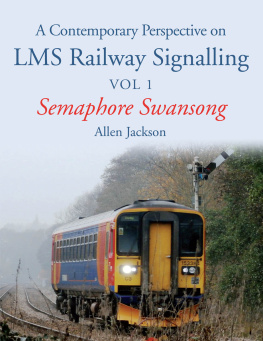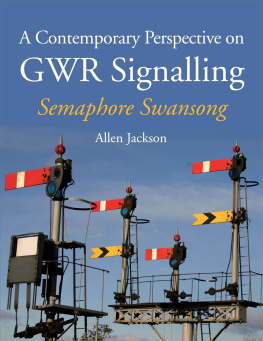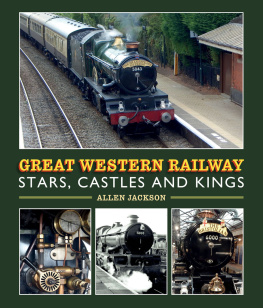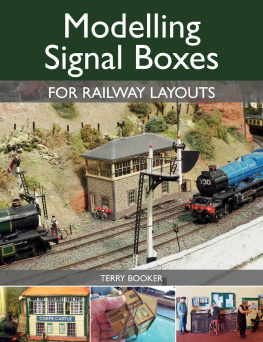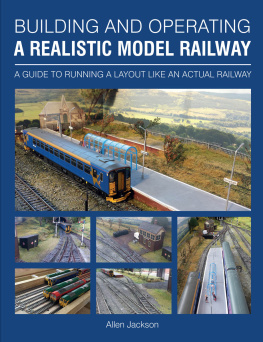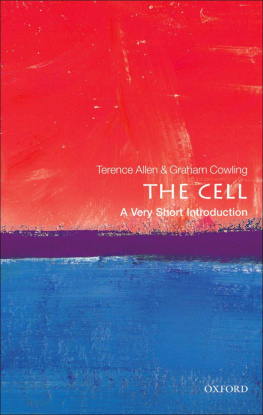Allen Jackson - Contemporary Perspective on LMS Railway Signalling, Vol. 1: Semaphore Swansong
Here you can read online Allen Jackson - Contemporary Perspective on LMS Railway Signalling, Vol. 1: Semaphore Swansong full text of the book (entire story) in english for free. Download pdf and epub, get meaning, cover and reviews about this ebook. publisher: Crowood, genre: Non-fiction. Description of the work, (preface) as well as reviews are available. Best literature library LitArk.com created for fans of good reading and offers a wide selection of genres:
Romance novel
Science fiction
Adventure
Detective
Science
History
Home and family
Prose
Art
Politics
Computer
Non-fiction
Religion
Business
Children
Humor
Choose a favorite category and find really read worthwhile books. Enjoy immersion in the world of imagination, feel the emotions of the characters or learn something new for yourself, make an fascinating discovery.
- Book:Contemporary Perspective on LMS Railway Signalling, Vol. 1: Semaphore Swansong
- Author:
- Publisher:Crowood
- Genre:
- Rating:3 / 5
- Favourites:Add to favourites
- Your mark:
- 60
- 1
- 2
- 3
- 4
- 5
Contemporary Perspective on LMS Railway Signalling, Vol. 1: Semaphore Swansong: summary, description and annotation
We offer to read an annotation, description, summary or preface (depends on what the author of the book "Contemporary Perspective on LMS Railway Signalling, Vol. 1: Semaphore Swansong" wrote himself). If you haven't found the necessary information about the book — write in the comments, we will try to find it.
Contemporary Perspective on LMS Railway Signalling, Vol. 1: Semaphore Swansong — read online for free the complete book (whole text) full work
Below is the text of the book, divided by pages. System saving the place of the last page read, allows you to conveniently read the book "Contemporary Perspective on LMS Railway Signalling, Vol. 1: Semaphore Swansong" online for free, without having to search again every time where you left off. Put a bookmark, and you can go to the page where you finished reading at any time.
Font size:
Interval:
Bookmark:
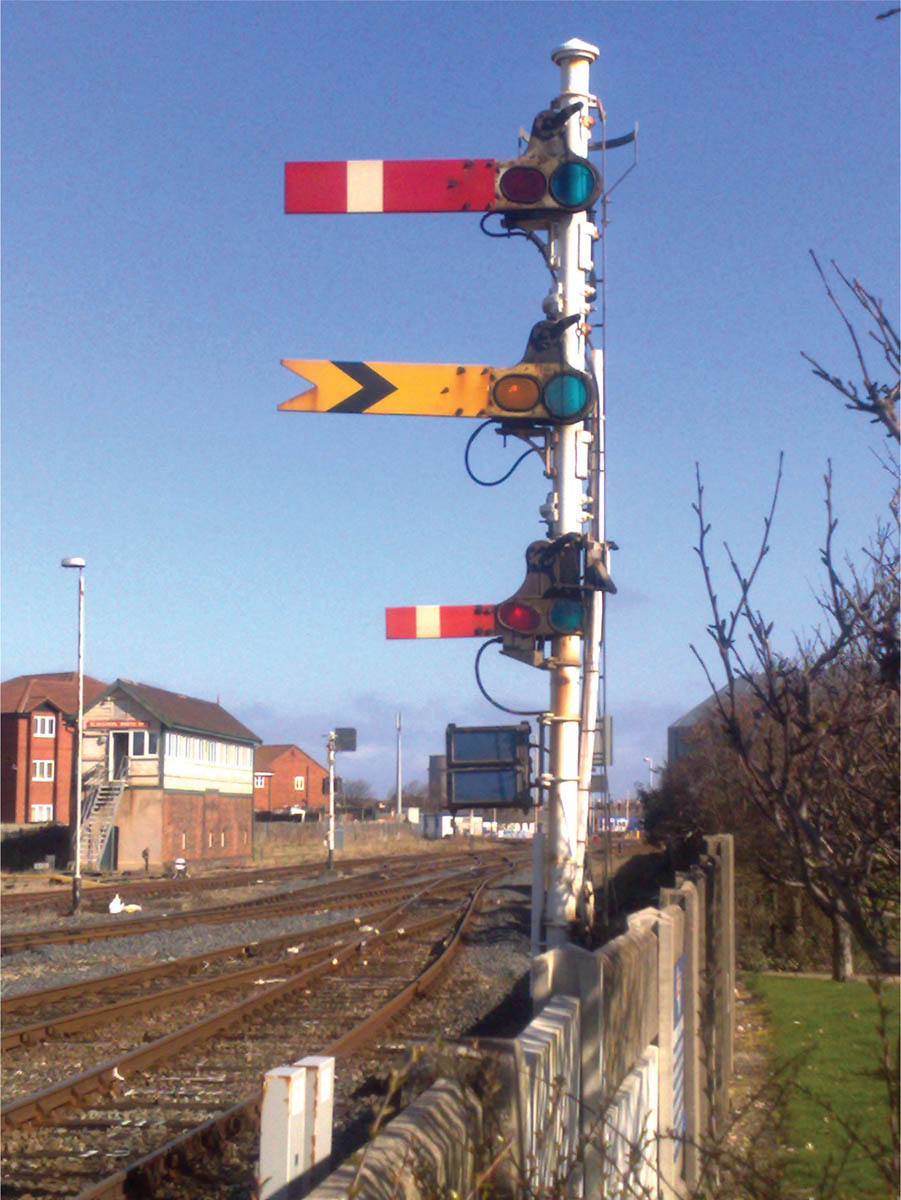
Semaphore Swansong
Allen Jackson

THE CROWOOD PRESS
First published in 2015 by
The Crowood Press Ltd
Ramsbury, Marlborough
Wiltshire SN8 2HR
www.crowood.com
This e-book first published in 2015
Allen Jackson 2015
All rights reserved. No part of this publication may be reproduced or transmitted in any form or by any means, electronic or mechanical, including photocopy, recording, or any information storage and retrieval system, without permission in writing from the publishers.
British Library Cataloguing-in-Publication Data
A catalogue record for this book is available from the British Library.
ISBN 978 1 78500 026 3
Frontispiece: Blackpool North No. 2 signal box
with some of its signals, March 2010.
Dedication
For Ninette.
Acknowledgements
The kindness and interest shown by railway signallers.
Contents
Preface
The GWR book in this series concentrated more on the ways of working, and while it would be easy and more lucrative to refer readers back to that volume, some explanations of those features have been incorporated in this work. I apologize if this seems slightly repetitive if you have already read the GWR book but I feel there will be some who have not.
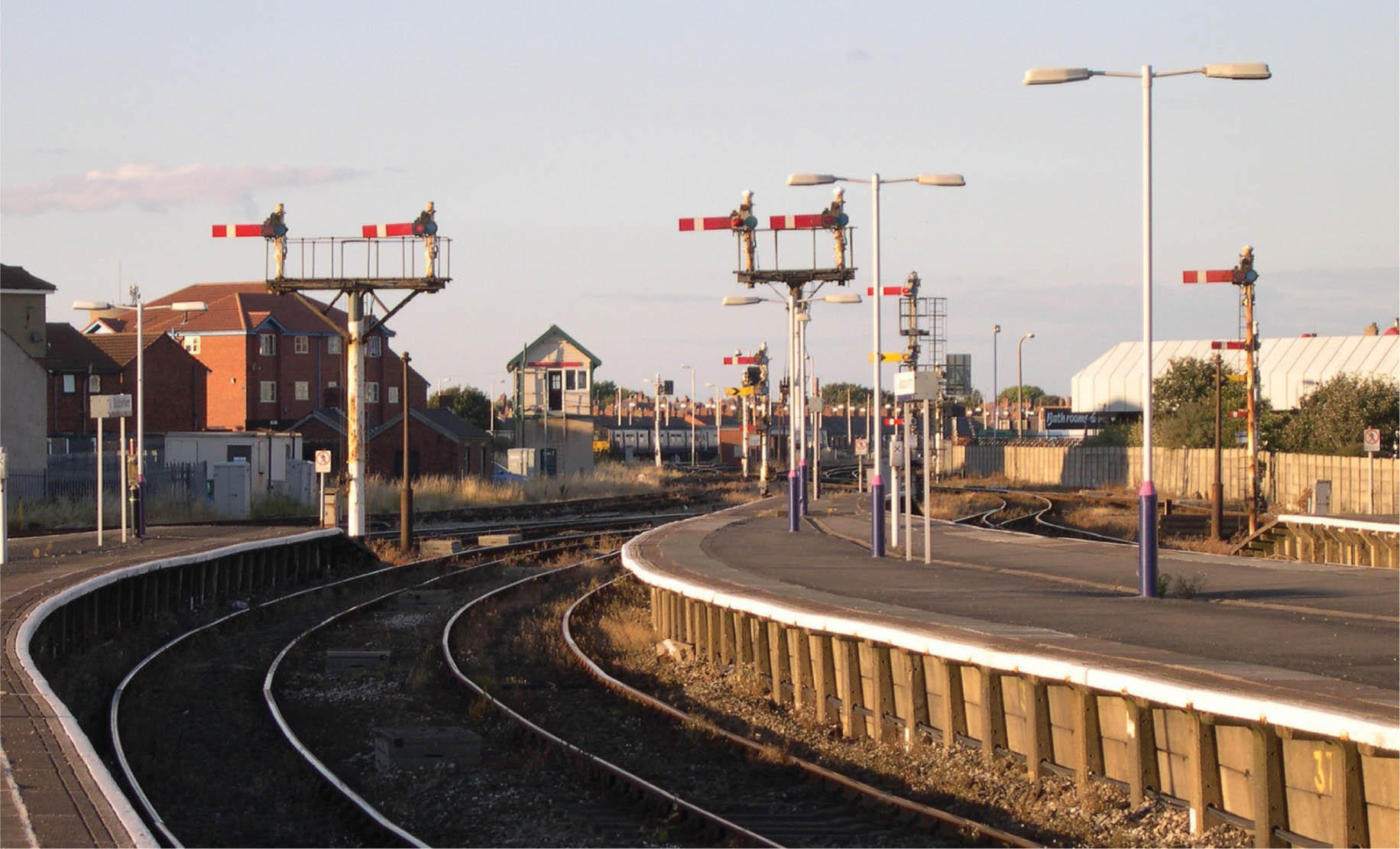
Fig. 1 Forest of semaphore signals at Blackpool North station, August 2005.
Introduction
Up until 1 January 1923 there were hundreds of railway companies in Britain. The government at the time perceived an administrative difficulty in controlling the railways activities at times of national crisis. The country had just endured World War I and the feeling was that it could all be managed better if they were amalgamated. Thus came the railway grouping, as it was termed, creating just four railway companies.
The London Midland and Scottish Railway was one of those four entities but the identities of the larger companies within it persisted and do so to this day. Lines are referred to by their pre-grouping ownership even now. This is often because routes were duplicated and so it was never going to be accurate to refer to the line from Manchester to Sheffield without the qualification Midland Railway if that was the one being referred to. This was to differentiate between the lines run by the Great Central.
Many of the smaller companies did lose their identity, in signalling terms, although their architecture may remain.
The only pre-grouping railways considered therefore are those for which an identifiable signalling presence existed at the time of the survey.
The ex-LMS signal boxes and infrastructure amount to 244 examples, so it has been necessary to split the LMS into two.
Volume 1 covers:
- Midland Railway (MR)
- Lancashire and Yorkshire Railway (L&YR)
- Furness Railway (FR)
- Glasgow and South Western Railway (GSWR)
- North Staffordshire Railway (NSR)
Volume 2 covers:
- London and North Western Railway (LNWR)
- Caledonian Railway (CR)
- Highland Railway (HR)
In the book the system of units used is the imperial system, which is what the railways themselves still use, although there has been a move to introduce metric units in places like the Railway Accident Investigation Branch reports and in the southeast of England, where there are connections to the Channel Tunnel.
As a guide:
- 1 mile = 1.6km
- 1 yard = 0.92m
- 1 chain = 20.11m
- 1 chain = 22 yards
- 1 mile = 1,760 yards or 80 chains.
CHAPTER 1
Signal Boxes and Infrastructure on Network Rail
The survey was carried out between 2003 and 2014 and represents a wide cross-section of the remaining signal boxes on Network Rail. Inevitably some have closed and been demolished, while others have been preserved and moved away.
Although the book is organized around the pregrouping companies, the passage of time has meant that some pre-grouping structures have been replaced by LMS or BR buildings.
If you are intending visiting any of them it is suggested that you find out what the current status is before you set off.
For reasons of access and position some signal boxes are covered in greater detail than others and some are featured as a focus on where the quality of the information or the interest of that location merits that attention.
Some of the signal boxes have been reduced in status over the years and while they may have controlled block sections in the past some no longer do so, but are (or were at the time of the survey) on Network Rails payroll as working signal boxes.
Details of the numbers of levers are included but not all the levers may be fully functional as signal boxes have been constantly modified over the years.
Lever colours are:
Red | Home signals |
Yellow | Distant signals |
Black | Points |
Blue | Facing-point locks |
Blue / brown | Wicket gates at level crossings |
Black / Yellow chevrons | Detonator placers |
White | Not in use |
Green | King lever to cancel locking when box switched out. |
Levers under the block shelf, or towards the front window normally, are said to be normal and those pulled over to the rear of the box are said to be reversed.
There are some boxes where the levers are mounted the opposite way round, in other words levers in the normal position point to the rear wall, but the convention remains the same.
Many signal boxes are considered to have architectural or historic merit and are Grade II listed by English Heritage or Historic Scotland. This basically means they cannot be changed externally without permission. If the owner allows the building to decay to such an extent that it is unsafe, the building can then be demolished. The number of signal boxes with a listing is due to increase following the news that they are all to be replaced by 2020.
There are currently sixty-four boxes across the network that are under consideration for listing, so whilst the listing status is given as being accurate when this was written, the status may well change. A Grade I listing would require the interiors to remain the same so that is unlikely to happen with Network Rail structures but may happen with the preservation movement many boxes have had the interiors preserved as fully operational working museums.
In Scotland the classification system is somewhat different and is as follows: Category A for buildings of national or international architectural worth or intrinsic merit; Category B for buildings of regional architectural worth or intrinsic merit; Category C for buildings of local importance, architectural worth or intrinsic merit.
Most signal boxes on Network Rail have an official abbreviation of one, two or sometimes three letters. This usually appears on all signal posts relevant to that box. Finding an abbreviation could be tricky for example there are eight signal boxes with Norton in the title until you realize that they are not unique. The abbreviation for each box appears after the box title in this book, if it has one.
Next pageFont size:
Interval:
Bookmark:
Similar books «Contemporary Perspective on LMS Railway Signalling, Vol. 1: Semaphore Swansong»
Look at similar books to Contemporary Perspective on LMS Railway Signalling, Vol. 1: Semaphore Swansong. We have selected literature similar in name and meaning in the hope of providing readers with more options to find new, interesting, not yet read works.
Discussion, reviews of the book Contemporary Perspective on LMS Railway Signalling, Vol. 1: Semaphore Swansong and just readers' own opinions. Leave your comments, write what you think about the work, its meaning or the main characters. Specify what exactly you liked and what you didn't like, and why you think so.

